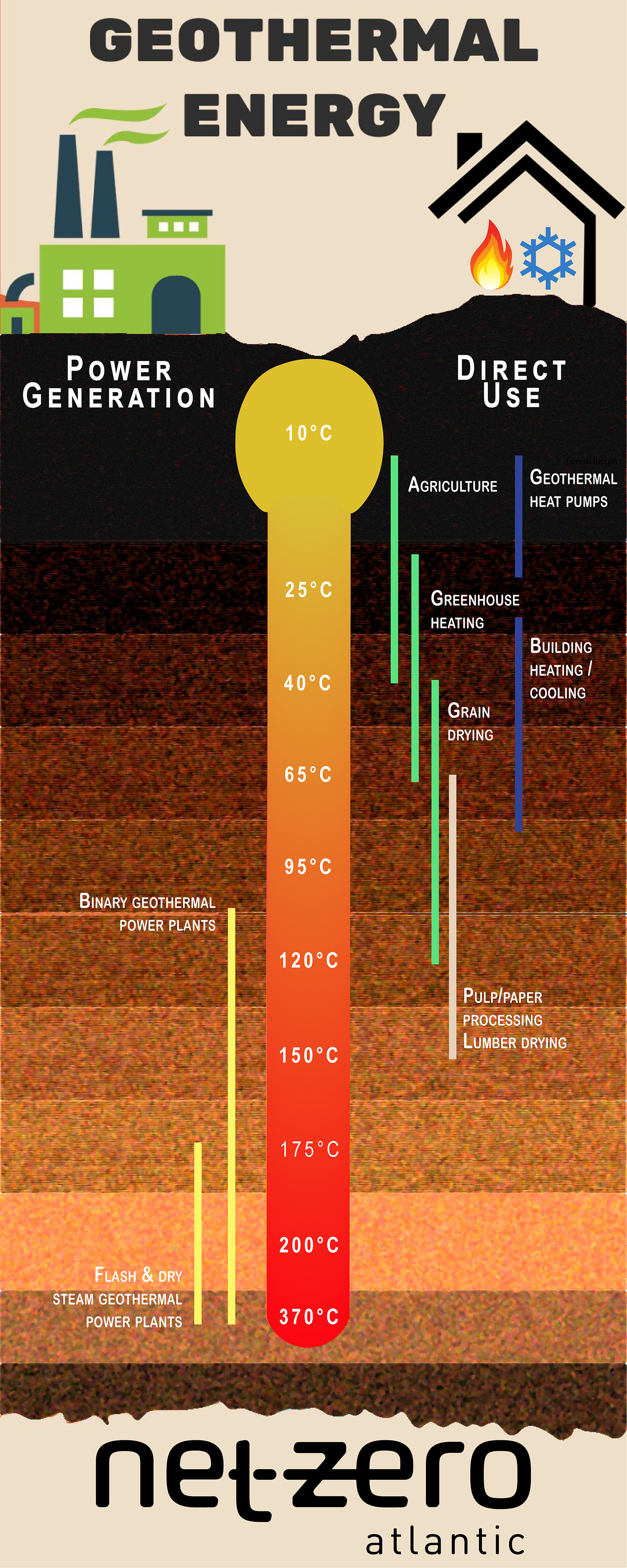Net Zero Atlantic is building project development capacity for mid-depth geothermal energy projects in Mi’kmaw and rural Nova Scotia communities through the Community Geothermal Resource: Capacity Assessment and Training Program (GeoCAT).
GeoCAT involves building relationships in communities across Nova Scotia to co-create and deliver information on geothermal energy opportunities. The goal is to help to create a roadmap for potential geothermal energy project development.
For the GeoCAT project, Net Zero Atlantic is partnering with Confederacy of Mainland Mi'kmaq (CMM), Unama'ki Institute of Natural Resources (UINR), Nova Scotia Department of Natural Resources and Renewables, as well as community liaisons in Nova Scotia communities located on or near geothermal resources. Learn more about the GeoCAT project team.

About Geothermal Energy
Geothermal is heat generated within the earth that can be harnessed for use by society. This form of energy can be naturally released through fumaroles/vents, hot springs, geysers, or volcanic eruption. For societal use, there are four categories of geothermal resources based on depth and heat:
- Deep geothermal (>3km) for electricity generation
- Mid-depth geothermal heat for district heating
- Mine water geothermal heating and cooling
- Geo-exchange (ground source heat pumps)
Since geothermal energy harnesses heat that is naturally produced below the earth’s surface, it is a renewable source of energy that is available 24/7. While this energy source has benefits such as requiring minimal land-use and competitive pricing, constraints like geologic conditions, missing subsurface data, and regulatory considerations can slow development.
Why Geothermal in Nova Scotia?
Several areas in Nova Scotia have great resource potential for mid-depth geothermal energy. These include: Cape Breton County, Cumberland County, Hants County, and Pictou County.
Geothermal energy can provide heating and cooling from abandoned mines, ground source heat pumps, and direct use of heat applications, like greenhouses, swimming pools, and aquaculture. Springhill, NS, has successfully used mine water geothermal for district heating for decades. Otherwise, it is a largely untapped resource in the province. Geothermal energy has the potential to displace current reliance on other heating sources, such as oil, natural gas and electricity, bringing Nova Scotia closer to achieving emissions reduction goals.
